

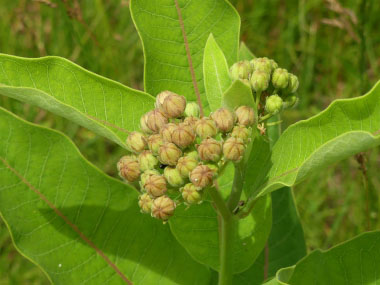
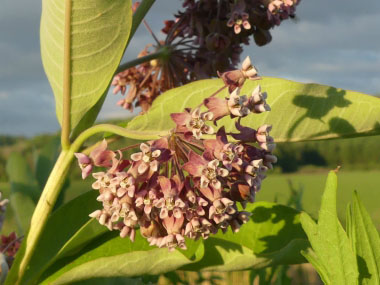
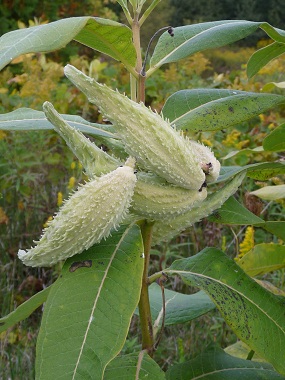

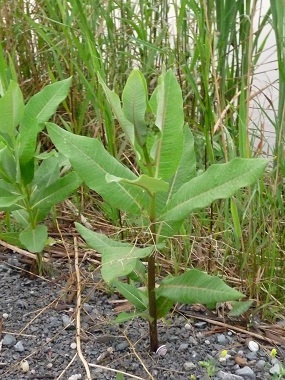
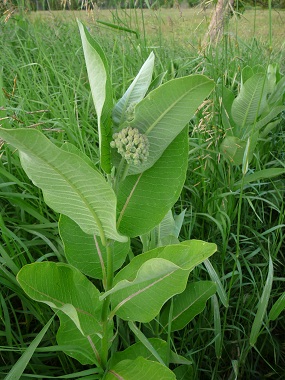
To support our efforts please browse our store (books with health benefits, etc.).
Milkweed is an herbaceous, tall perennial that got its name for its milky sap that contains latex, alkaloids and other compounds. Carl Linnaeus, Swedish botanist (1707-1778), named the genus after Asclepius, the Greek god of healing because of the many folk-medicinal uses for this plant. Milkweed supplies tough fibers for making cords and ropes, and for weaving coarse cloth. Proper identification of this wild plant is very important since it has a poisonous look alike called dogbane.
Distinguishing Features
Milkweed is perhaps most well-known for its seeds; they are flat, 8 mm long, reddish-brown, and have a pappus of silky hair at one end. The seeds are borne in narrow teardrop pods that measure between 12 and 37 cm long. The leaves of this plant provide food for monarch butterfly larvae as a consequence monarch butterflies and their caterpillars love this plant.
Flowers
The flowers grow in umbels (i.e. are umbrella-like), are purplish-pink in color and occur at the tips of stems and axils of upper leaves.
 Fields
of Nutrition has medicinal benefits and vitamin/mineral content of Milkweed.
Fields
of Nutrition has medicinal benefits and vitamin/mineral content of Milkweed.
Leaves
Milkweed leaves are opposite, large, ranging from 10 to 18 cm long, oval shaped, covered with fine soft hairs, and they are prominently veined.
Height
This plant can grow to be 1.5 metres tall.
Habitat
Milkweed grows in fields, along roadsides, and generally in dryer locations.
Edible Parts
The flower heads can be fried in batter and eaten. The flower buds first appear in early summer and can be harvested for about seven weeks. They look like immature heads of broccoli but have roughly the same flavour as the shoots. These milkweed flower buds are wonderful in stir-fries, soups, rice casseroles, and many other dishes. Milkweed pods are delicious in stew or just served as a boiled vegetable, perhaps with cheese or mixed with other vegetables but be sure you eat only immature pods. Boiled young shoots, unopened flower buds, flowers, and young pods are said to taste as good as asparagus and other cooked greens. The only way to eat milkweed is as a young shoot (under 15 cm).
Other Name
Silkweed.
Similar Plants
Winter Survival Food Handbook

PDF Plant Magazines
Types of Wild Food
Geographic Zones Seasons
Disclaimer
EdibleWildFood.com is informational in nature. While we strive to be 100% accurate, it is solely up to the reader to ensure proper plant identification. Some wild plants are poisonous or can have serious adverse health effects.
We are not health professionals, medical doctors, nor are we nutritionists. It is up to the reader to verify nutritional information and health benefits with qualified professionals for all edible plants listed in this web site. Please click here for more information.
Why Edible Wild Food?
- Food costs are rising
- Free, wild food is readily abundant
- Wild food adds nutrition to your diet
- Wild food can help treat various medical conditions







